#prehistoric archeological sites
Text
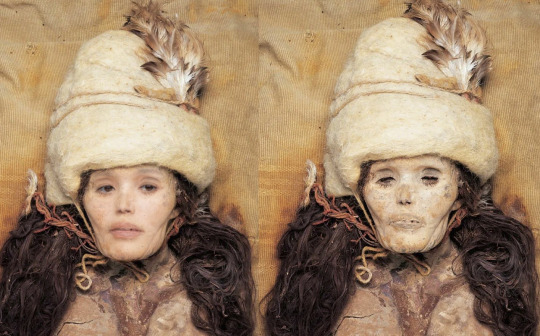
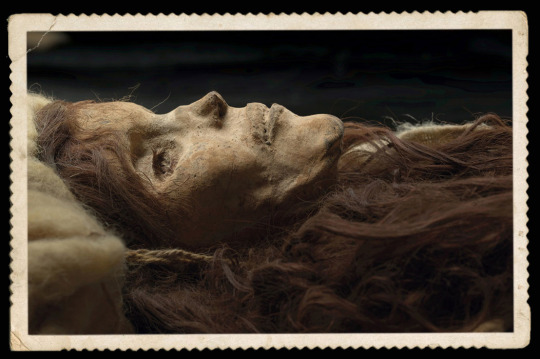
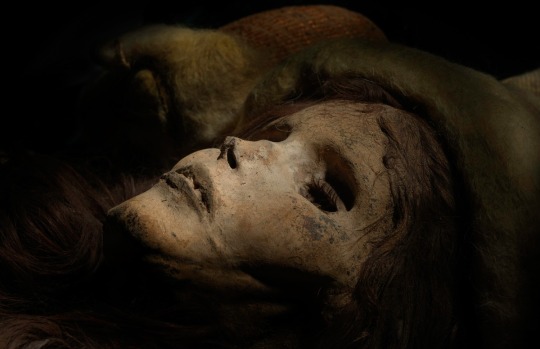



The Beauty of Xiaohe mummy (aka Little River Princess) ca. 1800–1500 BCE. Reconstruction of her face in first pic by TheHolyMountain on Reddit.
"The Tarim Basin, located on the ancient Silk Road, played a very important role in the history of human migration and cultural communications between the West and the East. However, both the exact period at which the relevant events occurred and the origins of the people in the area remain very obscure. In this paper, we present data from the analyses of both Y chromosomal and mitochondrial DNA (mtDNA) derived from human remains excavated from the Xiaohe cemetery, the oldest archeological site with human remains discovered in the Tarim Basin thus far.
Mitochondrial DNA analysis showed that the Xiaohe people carried both the East Eurasian haplogroup (C) and the West Eurasian haplogroups (H and K), whereas Y chromosomal DNA analysis revealed only the West Eurasian haplogroup R1a1a in the male individuals.
Our results demonstrated that the Xiaohe people were an admixture from populations originating from both the West and the East, implying that the Tarim Basin had been occupied by an admixed population since the early Bronze Age. To our knowledge, this is the earliest genetic evidence of an admixed population settled in the Tarim Basin.
The Tarim Basin in western China, positioned at a critical site on the ancient Silk Road, has played a significant role in the history of human migration, cultural developments and communications between the East and the West. It became famous due to the discovery of many well-preserved mummies within the area. These mummies, especially the prehistoric Bronze Age 'Caucasoid' mummies, such as the 'Beauty of Loulan', have attracted extensive interest among scientists regarding who were these people and where did they come from.
Based on analyses of human remains and other archaeological materials from the ancient cemeteries (dated from approximately the Bronze Age to the Iron Age), there is now widespread acceptance that the first residents of the Tarim Basin came from the West. This was followed, in stages, by the arrival of Eastern people following the Han Dynasty."
-Evidence that a West-East admixed population lived in the Tarim Basin as early as the early Bronze Age, by Chunxiang Li, et al.
168 notes
·
View notes
Text
Blackcrowing's Master Reading List

I have created a dropbox with pdfs I have gathered over the years, I have done my best to only allow access to documents which I found openly available through sites like JSTOR, Archive.org, or other educational resources with papers available for download.
That being said I ALSO recommend (I obviously have not read all of these but they are either in my library or I intend to add them)
📚 Celtic/Irish Pagan Books
The Morrighan: Meeting the Great Queens, Morgan Daimler
Raven Goddess: Going Deeper with the Morríghan, Morgan Daimler
Irish Paganism: Reconstructing Irish Polytheism, Morgan Daimler
Ogam: Weaving Word Wisdom, Erynn Rowan Laurie
Celtic Cosmology and the Otherworld: Myths, Orgins, Sovereignty and Liminality, Sharon Paice MacLeod
Celtic Myth and Religion, Sharon Paice MacLeod
A Guide to Ogam Divination, Marissa Hegarty (I'm leaving this on my list because I want to support independent authors. However, if you have already read Weaving Word Wisdom this book is unlikely to further enhance your understanding of ogam in a divination capacity)
The Book of the Great Queen, Morpheus Ravenna
Litany of The Morrígna, Morpheus Ravenna
Celtic Visions, Caitlín Matthews
Harp, Club & Calderon, Edited by Lora O'Brien and Morpheus Ravenna
Celtic Cosmology: Perspectives from Ireland and Scotland, Edited by Jacqueline Borsje and others
Polytheistic Monasticism: Voices from Pagan Cloisters, Edited by Janet Munin
📚 Celtic/Irish Academic Books
Early Medieval Ireland 400-1200, Dáibhí Ó Cróinín
The Sacred Isle, Dáithi Ó hÓgáin
The Ancient Celts, Berry Cunliffe
The Celtic World, Berry Cunliffe
Irish Kingship and Seccession, Bart Jaski
Early Irish Farming, Fergus Kelly
Studies in Irish Mythology, Grigory Bondarnko
Prehistoric Archaeology of Ireland, John Waddell
Archeology and Celtic Myth, John Waddell
Understanding the Celtic Religion: Revisiting the Past, Edited by Katja Ritari and Alexandria Bergholm
A Guide to Ogam, Damian McManus
Cesar's Druids: an Ancient Priesthood, Miranda Aldhouse Green
Animals in Celtic Life and Myth, Miranda Aldhouse Green
The Gods of the Celts, Miranda Green
The Celtic World, Edited by Miranda J Green
Myth and History in Celtic and Scandinavian Tradition, Edited by Emily Lyle
Ancient Irish Tales, Edited by Tom P Cross and Clark Haris Slover
Cattle Lords and Clansmen, Nerys Patterson
Celtic Heritage, Alwyn and Brinley Rees
Ireland's Immortals, Mark Williams
The Origins of the Irish, J. P. Mallory
In Search of the Irish Dreamtime, J. P. Mallory
The Táin, Thomas Kinsella translation
The Sutton Hoo Sceptre and the Roots of Celtic Kingship Theory, Michael J. Enright
Celtic Warfare, Giola Canestrelli
Pagan Celtic Ireland, Barry Raftery
The Year in Ireland, Kevin Danaher
Irish Customs and Beliefs, Kevin Danaher
Cult of the Sacred Center, Proinsais Mac Cana
Mythical Ireland: New Light on the Ancient Past, Anthony Murphy
Early Medieval Ireland AD 400-1100, Aidan O'Sullivan and others
The Festival of Lughnasa, Máire MacNeill
Curse of Ireland, Cecily Gillgan
📚 Indo-European Books (Mostly Academic and linguistic)
Dictionary of Indo-European Concepts and Society, Emily Benveniste
A Dictionary of Selected Synonyms in the Principle Indo-European Languages, Carl Darling Buck
The Horse, the Wheel and Language, David W. Anthony
Comparative Indo-European Linguistics, Robert S.P. Beekes
In Search of the Indo-Europeans, J.P. Mallory
Indo-European Mythology and Religion, Alexander Jacob
Some of these books had low print runs and therefore can be difficult to find and very expensive... SOME of those books can be found online with the help of friends... 🏴☠️
library genesis might be a great place to start... hint hint...
My kofi
#books#book#resource#blackcrowing#pagan#paganism#irish mythology#celtic#irish paganism#irish polytheism#celtic paganism#celtic polytheism#celtic mythology#indo european#indo european mythology#historical linguistics#paganblr#masterlist#irish reconstructionism#irish reconstructionist#celtic reconstructionist#celtic reconstructionism#masterpost
99 notes
·
View notes
Photo





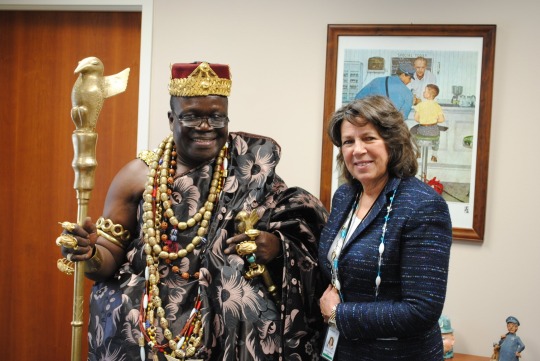
The human remains discovered at Jebel Sahaba, (a southern Egyptian site associated with the 15,000-year-old Qadan culture) had a cranial match to the Ashanti people of West Africa - as seen in this study below.
Why do the Ashanti people still dress this way?
Lets try and connect the dots here.
The Qadan culture is over 14,000 years old.
The human remains found in the Jebel Sahaba site (associated with the Qadan culture) showed cranial affinities to modern West Africans
Modern West Africans are STILL displaying cultural affinities to the Egyptian Pharaonic culture (which is merely a chieftainship).
If West Africans are from the prehistoric period associated with Qadan culture, and yet they STILL have the Pharaonic culture, the Pharaonic culture must be over 14,000 years old (seeing that the Qadan culture was also 14,000 years old).
The obvious answer is that the people of the Qadan culture started the Pharaonic culture but were absorbed by other groups carrying West Asian genes.
This invalidates the claim that the ancient Egyptian Pharaonic culture started in 3000 BC.
The Pharaonic culture (which is merely a culture of kingships and chieftainships) already existed throughout the agricultural tribes in Africa. Even the hunter-gatherer and proto agricultural tribes in Papua New Guinea who carry very old haplogroup C, show similar culture of chieftainship deep inside their jungles.
Most likely, in prehistory, these tribes found in the tropics used biodegradable materials to dress their chiefs and kings (as seen in the below image). Such materials can’t be unearthed in archeology if they’re already degraded.
Mainstream academia can only use guesswork. For all we know, those cultures of the tropics could have been around for tens of thousands of years, going back 40,000 years ago. But archeologists can never determine how long they’ve had the culture since all evidence is degraded.
Even now, the Sahara, where farmers once lived, is all but sand. Archeologists have no clue what happened during the periods of the green Sahara since all the evidence is gone.
The obvious answer is that all of these cultures could have existed in the tropics for tens of thousands of years. Mainstream academia has a long way to go when it comes to studying the history of the tropics. They have based all their studies in regions of the world with moderate climate. All they can tell us so far is a history that goes back to 11,000 BC, of which they always focus on the Middle East.
The culture and traditions of the tropics only arrived in Europe after a group of nomadic West Eurasians (linked to the ancestors of Berbers) migrated south at the end of the ice age and absorbed the tribes of the tropics who were crop cultivators and horticulturalists. The absorption created a mixed population similar to Ethiopians, who carried the E1b1b haplogroup into Europe and took the new culture and cultivation techniques back into Europe, which was later spread by the Anatolians.
The migrants also carried a new set of genes with an African MtDNA, as in the below.
#ashanti#african#africans#kemetic dreams#euraasians#sahara#western asia#north africa#north african#nile valley#hopi
137 notes
·
View notes
Text

Worker Discovered Two 2,500-Year-Old Gold Necklaces in Spain
wo gold necklaces dating from around 2,500 years ago have been found by chance in northwestern Spain by a worker for a local water company.
Sergio Marciandi was working in Cavandi, Asturias, on August 29 when he spotted a gold necklace among some rocks.
He got word to Pablo Arias, a professor of prehistoric archeology at the University of Cantabria, who recounted the story of the find on Wednesday.
Arias traveled to the scene along with experts from the Asturias Archaeological Museum and carried out an initial investigation, which uncovered a second necklace that had been broken into several pieces, he said.
“It’s really impressive,” said Arias, who added that the find could boost our understanding of the Iron Age, the period in which they were made.
While other gold necklaces from the Iron Age have been found, most were discovered in the 18th and 19th centuries, when limited archaeological techniques meant much of the information about their provenance was lost, Arias explained.
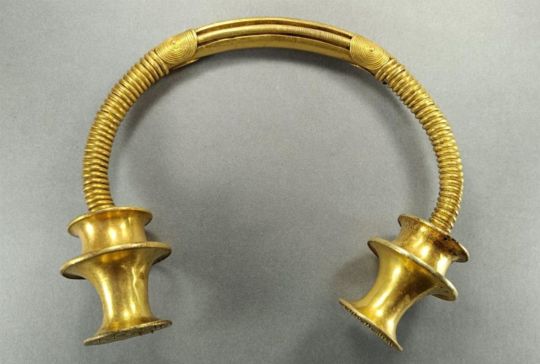
In this case, the site is intact, giving archaeologists a much better idea of their context, he added.
“We have very precise information about where they were found,” said Arias. “It’s quite exceptional.”
The discovery opens up many potential fields of study, he said, which could shed new light on a period about which little is known.
As things stand, the necklaces show signs of wear on areas that would have been in contact with the wearer’s skin and clothes.
“We know that they were used,” said Arias.
Necklaces of this kind were associated with the upper echelons of society, he added, explaining: “Not everyone could afford one of these necklaces.”
Dating the objects is difficult, but Arias believes they are unlikely to be more than 2,500 years old.
The regional government in Asturias praised Marciandi for informing officials of the find straight away, and said in a statement Sunday that the find was “an extraordinary development considering their quality and the skill of the artisans that made them, and most of all for opening a window to the study and knowledge of the most emblematic type of jewelry of Iron Age gold work, which until now had been closed.”
By Jack Guy.
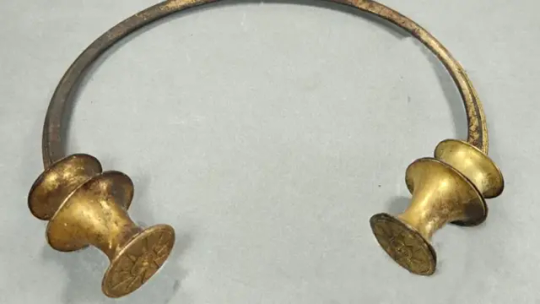
#Worker Discovered Two 2500-Year-Old Gold Necklaces in Spain#treasure#gold#gold jewelry#ancient gold jewelry#ancient artifacts#archeology#archeolgst#history#history news#ancient history#ancient culture#ancient civilizations#Iron Age
35 notes
·
View notes
Text


Castro de Santa Tegra, Galiza, 03-09-23
A Castro is a prehistoric town with rounded buildings. There are some similar archeological sites in celtic culture nations like Ireland and Whales, usually called hillforts because, well. They are somewhat fortified (they usually have town walls) and they're up in the hills.
The castro is the Galician version of the hillfort, and there are some beautiful examples out there, but this -Santa Tegra- is one of the best preserved ones.
It's getting up there and feeling I'm more connected to my ancestors. We used to live in places like this!
#Santa Tegra#Galiza#03-09-23#photography#photo#photographers on tumblr#aesthetic#aesthetics#castro#castros#celtic#celts#ancient celts#prehistory#castrexos
15 notes
·
View notes
Text
Long post!
I do not understand how so many people are willing to dismiss the ideas of Graham Hancock’s because he call’s out modern archeology academias & Joe Rogan was sprinkled in the Netflix series Ancient Apocalypse
When we think about the oldest religion being Hinduism and they’re advanced ancient knowledge on the age of the universe and very specific cycles they uncovered were exceptionally precise - how is it we only now discovered they’re calculations true and still call ancient people simple/ uncivilized humans.
When we know the importance of astronomy to ancient human’s. How people navigated the seas using the stars as maps, how civilizations took astronomy seriously, how often they studied them, it’s not a coincidence so many cultures studied the stars and have standing evidence preserved of the same studies - why is archeology so quick to dismiss astronomy when viewing ancient sites?
When we know mythology, lore, and the power of story telling. We know the influence these stories carry for thousands of years passed on to this day. Modern day academia will not listen to the people of the land. Story telling becomes extremely skewed or forgotten due to unimportance.(I know Graham Hancock got some of these stories grossly inaccurate, he’s not a savior)
Graham Hancock only offers suggestion and a different view on the massive evidence of a missing time period we choose not to acknowledge. He’s not saying he’s 100% right, even the stories he reiterates are grossly simplified to match some of his ideologies (he’s not the only one to do that). He’s offering an open minded story of something that could have been very real. There’s too much evidence in our modern world to try to dismiss any discovery we do not yet understand.
If we do not fully understand something we cannot just keep dismissing ideas. That doesn’t do anything good. It doesn’t preserve anything. It doesn’t progress us to keep it in a box.
Paleontology proves to us, with every new discovery, that our original idea on dinosaurs were wrong! Because that’s what science is - it’s expanding the view of the world.
We know the historical discoveries/inventions/ideas, made by minorities, have been taken from them and skewed/killed/buried/paid off - over time to shine light on terrible people. This story is not uncommon to humanity.
The day people of the world realize that we know nothing of the world will be the day that humanity expands. If humanity only decides to go with “what we know” that’s a limited box. Archeologist, scientist, historians, medical, astronomers - they have ALL been wrong before. It’s is so crazy to believe we are at “the pinnacle” of all modern knowledge. WE KNOW NOTHING.
New article discoveries about ancient humans come out everyday. A more recent one I read was about a very prehistoric skeleton that showed evidence of a very modern surgical amputation practice that was thought to not have existed in that time period and if it was the likelihood of survival was remarkable. On top of this discovery they noted that this amputation was eariler in this human’s life (childhood) and the human survived his full life time with this amputation, meaning there was disabled assistance - which was thought to have not been a common behavior with ancient humans.
The reason I bring up this article is because we truly do not know anything about our prehistory and it’s a progressive attitude to consider humanity has been far more advance than we give credit to. There is a reason to put time and effort into the idea that there was a advanced anxiety civilization. It’s only now “crazy” to observe and talk against things that do not add up and call them conspiracies. In history some conspiracies are/were proven right, it just needed more investigation.
#prehistory#prehistoric#ancient apocalypse#graham hancock#ancient civilizations#Atlantis#advanced civilizations#conspiracy theories#conspiracies#human prehistory#special interest#autism special interest#existentialism#open minded#humanity
73 notes
·
View notes
Note
I think a lot of people forget that pagan myths and religious texts are often based around events that happen but misremembered or people were not being able to interpret correctly.
Dragons: Most likely ancient humans finding dinosaurs bones but not comprehending them.
Giant snakes like the hydra, Apophis, orochi, and Jorgumdar: humans finding remains of giants snakes or if I got my cavemen stuff right. Prehistoric humans fighting the giant snakes that once roamed the earth.
You mentioned a comet, now did that comet created massive tsunamis and such that lead to the creation of the great flood, the Greek monster Typhon, etc?
Atlantis is a allegory yes, but we keep finding massive landmass that submerged into water. Or even human temples and such in the sea. So my question is: how much of human history have been lost to time by nature?
They also ignore that oral history and mythology is how ancient cultures passed down knowledge. Pretty much every ancient myth is either based on something that happened or is designed to teach some sort of lesson.
As for the flood, yes, exactly. Pretty much every corner of the world has a flood myth, and they all pretty much go more or less the same way. The gods, or God, is angry with humanity, sends a warning to one man saying that a flood will come; either that god or another god tells the man to build a boat, or an ark, or an underground sanctuary, and hide everything that needs to survive the flood; once the flood is over, the man and his family repopulate the Earth. There's also usually a warning that another world ending cataclysm will happen if humanity refuses to obey the gods/loses its way/sins too much/etc. And a lot of those stories say that the new apocalypse will be fire. Keep in mind these are stories from civilizations that conventional history says never met, and could never have met. So if that's true (and there's some doubt on that front, tbh) then all these cultures either were talking about the same event, or someone went around the world and spread this story for some reason, or both.
It's actually really fascinating if you do a deep dive. There's a lot of evidence out there that human civilization is a lot older than conventional historians and archeologists are willing to admit. And that a lot has happened in our past that those same people refuse to even allow to be studied. For example, there's evidence to suggest that Atlantis may have been in Indonesia in the sunken land of Sundaland. But after some promising early findings--including a giant temple that was dated to just after the end of the last ice age (when humanity was supposed to still be all hunter-gatherer societies and not even remotely able to build giant stone temples), with even older layers of the temple buried deeper that were discovered by ground penetrating radar--the Indonesian government shut down all study of that site because the head of some archeology department in the government publicly petitioned to have it stopped and their funding redirected towards her own projects. Archeology is a very stubborn field of study, and archeologists are very, very reluctant to accept any new information that contradicts what they already "know". Honestly, ancient alien nonsense has done a lot of harm to alternative historians, because they're now the popular face of all non-conventional history. Even though a lot of what they show as evidence of aliens is actual, real evidence that currently accepted conclusions in archeology might be wrong, it's hard for anyone to study those things seriously partly because it's tied to "ancient aliens". But that's a whole other rant. Basically don't trust academia, especially entrenched academia that refuses to question its own dogma.
25 notes
·
View notes
Note
Congrats on your graduation! If you’re okay with answering, can I ask what drew you to archeology and how you knew that was the field you wanted to work in/study? Sorry for asking, I’m just real nosy and interested when it comes to ppl sharing their studies lol
hello! sorry that this is latest possible response but thank you so much for your congratulations!
my mum was a hobbyist archaeologst when she was younger, and she used to make me watch time team as a child to get me to sleep (which, if you're not familiar, is just a bunch of british archaeologists going around doing insane things to heritage sites. there's lots on youtube, i recommend it). i maintained an interest in history but i didn't consider it as a career in the slightest until i went to south america when i was 21, and i visited the cementerio de chauchilla while staying in nazca, which is a 7th century (i think?) prehispanic burial site. someone gave us a tour of the area, and he told us that he was studying archaeology for his post grad and he chatted to us for ages about it, and when we went back to the place we were staying in, i looked up university courses straight away. it was a very lightbulb moment for me. i dropped out of college a few years before so i could help my parents pay the bills, so i had to go through a bunch of shit to get into uni at all, but its been the only constant in my life, ever haha.
i cant explain why i had such unshakable faith in the field, because i have wanted to do a lot of different things in my life, but when i realised i could actually be an archaeologist, it's been the only thing ive wanted ever since. my interest is particularly in maritime archaeology and early modern european expansion, but i've studied a huge range from early human evolution, prehistoric vietnam, right through to colonial america and late victorian industrial. im planning on doing my postgrad next year in maritime archaeology, and working in academia hopefully!
8 notes
·
View notes
Text

Sierra Vista
An astronaut aboard the International Space Station took this photograph of Sierra Vista in southern Arizona, just north of the United States-Mexico border. Bounded on all sides by military land (Fort Huachuca), national forest, and conservation areas, Sierra Vista’s city area is structured in a triangular shape. Creeks and washes sprawl across the desert flats from the Huachuca Mountains to the San Pedro River.
The Huachuca Mountains lie to the west of Sierra Vista and neighboring urban areas. These mountains are part of the Sky Islands, an isolated group of mountain ranges scattered throughout southeastern Arizona and northern Mexico. Cool peaks and uplands contrast with the hotter desert lowlands. Miller Peak rises to 9,466 feet (2,885 meters) above sea level, almost 5,000 feet (1,524 meters) above Sierra Vista. Portions of the Huachuca Mountains and the surrounding area fall within the Miller Peak Wilderness and the Coronado National Forest.
Toward the east, Sierra Vista stretches to the San Pedro Riparian National Conservation Area (NCA), which protects a rare riverbank ecosystem within the Chihuahuan and Sonoran Deserts. The conservation area is home to endangered species, such as the yellow-billed cuckoo, the willow flycatcher, and the semi-aquatic plant known as the Huachuca water-umbel.
The protected regions around Sierra Vista also preserve cultural and historical landmarks. The caves and canyons of the Huachuca Mountains contain petroglyphs dating back 13,000 years. Additionally, prehistoric mammoth remains and ancient tools have been found at the Murray Springs Clovis Archeological Site within the San Pedro NCA.
Astronaut photograph ISS067-E-13009 was acquired on April 13, 2022, with a Nikon D5 digital camera using a focal length of 500 millimeters. The image was provided by the ISS Crew Earth Observations Facility and the Earth Science and Remote Sensing Unit at Johnson Space Center. The image was taken by a member of the Expedition 67 crew. It has been cropped and enhanced to improve contrast, and lens artifacts have been removed. The International Space Station Program supports the laboratory as part of the ISS National Lab to help astronauts take pictures of Earth that will be of the greatest value to scientists and the public and to make those images freely available on the Internet. Additional images taken by astronauts and cosmonauts can be viewed at the NASA/JSC Gateway to Astronaut Photography of Earth. Caption by Sara Schmidt, GeoControl Systems, JETS II Contract at NASA-JSC.
2 notes
·
View notes
Text


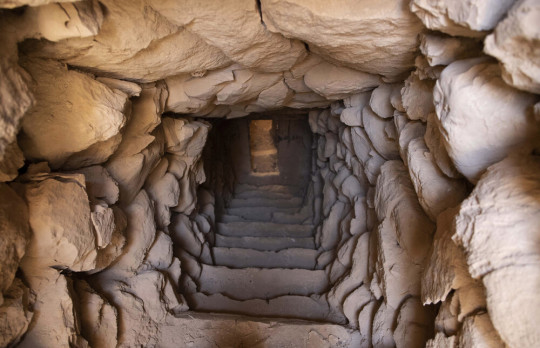
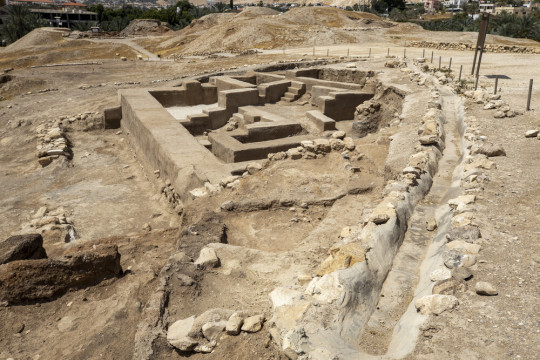
Ancient Jericho/Tell es-Sultan, archeological site in the center of Jericho/Arīḥā, West Bank, Palestine. In 2023 it was inscribed in UNESCO's list as a World Heritage Site, despite Israel's attempt to stop the inscription from happening.
Photos taken in 2021-2022 © Ministry of Tourism and Antiquities (MoTA)
https://english.almayadeen.net/news/politics/unesco-designating-areeha-as-palestinian-site-infuriates-isr
#palestine#west bank#jericho#arīḥā#free palestine#from the river to the sea palestine will be free#photography#ancient jericho#tell es-sultan
3 notes
·
View notes
Text
About that underwater cave with prehistoric art: sea levels were much lower during the ice age. That cave must have been by the shore or even well inland at the time and then flooded as the seas rose.
It's actually something I think a lot when I think about archeology. There must be countless historical artifacts and sites lost to the seas. Especially relevant to the Americas if we assume (as I do) that the people of the Americas came by bordering the coast. The traces of those travels are probably forever lost to the sea by now.
There's also a very unlikely possibility that complex cultures (no Ancient Aliens crap but maayyyyybe city sized settlements might have risen by the coasts in the ice age, then abandoned, and now forever lost underwater. Very unlikely, but I wouldn't be surprised if there are more Gobleki Tepe style discoveries just waiting
15 notes
·
View notes
Text
Urgent Call to Protect Arguni's Archaeological Sites Amid Fertilizer Factory Construction
Hari Suroto calls for protection of Arguni's archaeological sites, including Berau Bay's cliff paintings, amid fertilizer factory build.
via Tribun Papua Barat, 18 November 2023: Hari Suroto, a researcher at BRIN Environmental Archeology Research Center, has urged the Fakfak Regency Government to protect various archaeological sites in Arguni District, West Papua, in light of a new fertilizer factory construction. Emphasizing the need for a review process, Suroto highlights the importance of mapping and zoning prehistoric sites,…
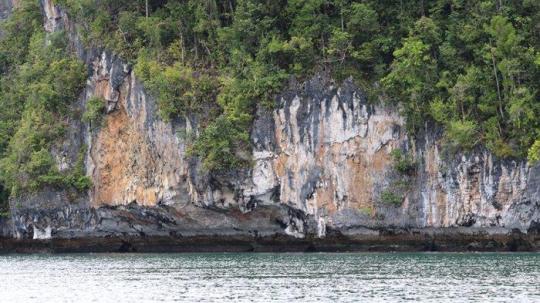
View On WordPress
#BRIN (Badan Riset dan Inovasi Nasional)#construction#Fakfak (regency)#Hari Suroto (person)#rock art#West Papua (province)
2 notes
·
View notes
Text
ART OF ODISHA
ART OF ODISHA

The Rock Art of Odisha dates back to as early as the prehistoric period. The earliest reported are the rock
shelters of Vikramkhol in Jharsuguda district. The cells attracted men to live there, who decorated these rock
shelters with paintings and engravings in various geometrical forms and figures of human and animals.
HERE ODISHA HISTORY BOOK AVAILABLE
Most of these sites are found in the hills of Sundergarh, Jharsuguda, Sambalpur and Kalahandi. The rock edicts at
Dhauli, Jaugad and the archeological treasures found at excavation sites of Sisupalgarh testify to the earliest
highly developed sculptural art of Orissa covering a period of about 2000 years.
The forepart of an element, hewn out of solid rock at Dhauli represents the earliest sculpture in Odisha. With the
rise of Kharavela (Chedi dynasty) in the first century BC caves were ordered to cut in the solid rocks for the use of
Jain ascetics. The caves of Khandagiri and Udayagiri decorated with highly artistic large panels depicting a vivid
picture of the contemporary society find special mention in the rock cut architecture of India.
Figures of Jain tirthankars and Sasanadevas with their emblems have been found in caves in Puri, Keonjhar, Balasore and
Koraput districts. The caves consist of one or more cells and a few of them are fronted by pillared verandahs.
The Buddhist sculptural art developed with Emperor Ashoka from 261 BC to about 12th Century AD. With the transforming of
Mahayana form of Buddhism to Vajrayan, the creative genius of the artists once again attained its peak as reflected by
Buddhist sculptures of Lalitgiri, Udayagiri and Ratnagiri.
Sculptures representing Boddhisatva and Avalokiteswara in different forms along with Buddha images, stupas and monasteries
were the main constituent of the early medieval Odishan sculptural art.
However, the art found its supreme expression represented by the sculptures pertaining to various sects of Hinduism in Orissa,
the Saivism, Vaishnavism and Shaktism (represented by Durga and her different forms). The Sailodbhava, the Bhaumakaras, the
Somavansis and the illustrious Gangas are particularly known for temple building. The sculptures and superb carvings on the
temples at Bhubaneswar, Puri and Konark are the finest examples of the Odisha’s glorious past.
Look out for the sculptures of nayika and mithuna figures, yakshas and yakhis (the male and female deities associated with
ancient fertility cults), heavenly musicians, human poses and expressions, elephants, horses and soldiers and those depicting
day to day themes, like hunting, dancing, games and family life. After the fall of the Gangas, sculpture in Odisha vanished
as an art form.
2 notes
·
View notes
Note
🌻
Tidal Tempest boggles my mind in terms of worldbuilding, especially the past.

The very beginning of the level in the Present is this set of volcanoes. We never see them again in any timezone. What does this mean? How can there be submerged ruins right next to a row of volcanoes? And why is this the only time period in which we can see them?
Also, okay, these are ruins of an ancient place, got it. But in the Past...

... it's still ruins. In a cave, much less complex, looking prehistoric, but it's still not the original place. What is the history of Tidal Tempest? How ancient is this place?
As a sidenote, the Bad Future used to scare me as a kid:

It's just a nasty place. The purple water implies that Eggman turned this important archeological site into some kind of toxic wastedump: talk about the lack of respect. The brown and green wall used to seriously unnerve me for some reason. And the American music was for me the most depressing piece you could have composed.
7 notes
·
View notes
Text
Archeological Dig Starts at 5,000-Year-Old Tomb Linked to King Arthur https://www.goodnewsnetwork.org/archeological-dig-starts-at-5000-year-old-tomb-linked-to-king-arthur/
Archeologists from the University of Manchester have started a dig at a 5,000-year-old tomb linked in legend to King Arthur, hoping to answer some of the mysteries surrounding the enigmatic site in the process.
Arthur’s Stone, as it’s called, is a Neolithic chambered tomb which has never previously been excavated, but experts at English Heritage, which looks after Arthur’s Stone in Herefordshire, say that similar examples in the same region have been found to contain incomplete skeletal remains of several people, together with flint flakes, arrowheads and pottery.
Like many prehistoric monuments in western England and Wales, this tomb has been linked to King Arthur since before the 13th century. According to legend, it was here that Arthur slew a giant who left the impression of his elbows on one of the stones as he fell.
Today, only the large stones of the inner chamber remains, which is placed in a mound of earth and stones whose original size and shape remains a mystery. The chamber is formed of nine upright stones, with an enormous capstone estimated to weigh more than 25 tons on top.
More recently, the author CS Lewis is thought to have been inspired by the area when creating his fictional world of Narnia; with Arthur’s Stone the inspiration for the stone table upon which Aslan the Lion is sacrificed in The Lion, The Witch, and The Wardrobe.
“Arthur’s Stone is one of the country’s most significant Stone Age monuments, and this excavation gives a really rare and exciting chance for members of the public to come and see archaeology in action,” said Ginny Slade, Volunteer Manager at English Heritage.
“Our team of wonderful volunteers will be on hand to explain the latest findings as they happen—we’re asking people to book in advance to make sure everyone has a chance to enjoy this great opportunity.”
The dig follows research undertaken by the Universities of Manchester and Cardiff immediately to the south of the monument last year which has already changed the thinking about the orientation and origins of the site.
It was assumed that Arthur’s Stone stood within a wedge-shaped stone cairn, similar to those found in the Cotswolds and South Wales, but Manchester’s Professor Julian Thomas and Cardiff’s Professor Keith Ray found that the monument originally extended into a field to the southwest, and may have taken the form of a low turf mound with rounded ends.
16 notes
·
View notes
Text
Prehistoric Monument Hidden in Plain Site?
Prehistoric Monument Hidden in Plain Site?
More Info
A small village in southern Italy is home to an incredible prehistoric enigma. For centuries, perhaps millennia, a mysterious monolith (or should I say megalith?) has dominated the landscape and been waiting for its rightful place in the archeological world.
Defying time and weather, “The Elephant of Campana” stands over sixteen feet tall. Despite the horrific erosion it has endured,…
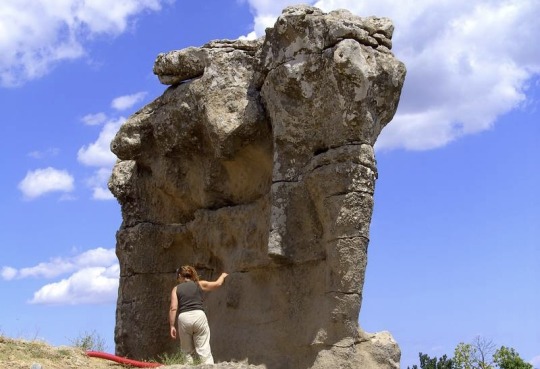
View On WordPress
6 notes
·
View notes